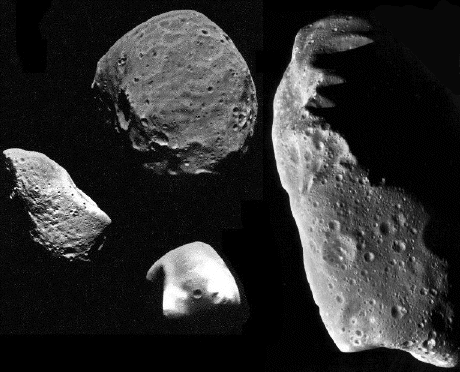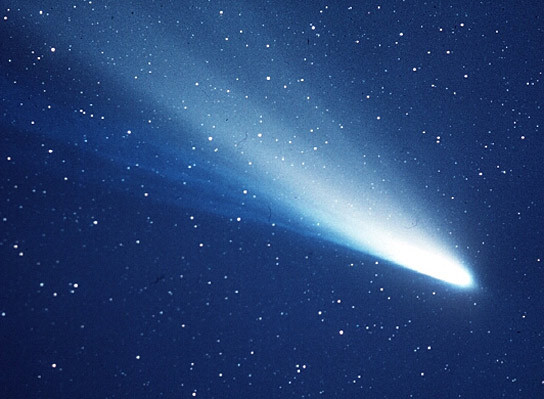What are the Small Bodies that Orbit Planets
Small Solar-System Bodies
These include asteroids, comets, and other small bodies.
Asteroids
These are large pieces of rock or metal and rock. Most asteroids orbit the sun between Mars and Jupiter. This region is called the Asteroid Belt. Astronomers have so far recorded the orbits of over 4000 asteroids. There are thousands more! Some scientists believe that asteroids were formed when our solar system was formed 5000 million years ago, while others believe that these are the remains of a planet that was broken up by a massive collision.

Comets
These are small chunks of ice and dust that revolve around the sun. They have oval orbits and spend most of their time far away from the sun. Comets are characterized by a small solid part (called the head) surrounded by a cloud of glowing gases (called the coma). As the comet approaches the sun, the coma stretches out into a long tail of over 1 million kilometres. Comets can be seen from the Earth when they come close to the sun. Since comets have very long orbits, they take a very long time to return, from a few decades to a few thousand years. One of the best-known comets is the Halley’s Comet. It is named after Edmund Halley, who calculated its orbit. Halley’s Comet comes close to the sun once every 76 years.

Meteoroids, meteors, and meteorites
Meteoroids are smaller than comets. They are mainly chunks of rock. They may be fragments of comets or shattered asteroids. When the Earth’s orbit crosses the path of a meteoroid, it falls through the Earth’s atmosphere. As it falls through the Earth’s atmosphere, it burns up as a result of the enormous heat generated. This makes a streak of light, which is called a meteor or a shooting star. On a clear night, we can see many meteors in an hour. Most of the meteoroids fully burn up before they reach the lower atmosphere. However, sometimes, a meteoroid does not fully burn up and it hits the Earth’s surface as a solid piece. This is called a meteorite.
